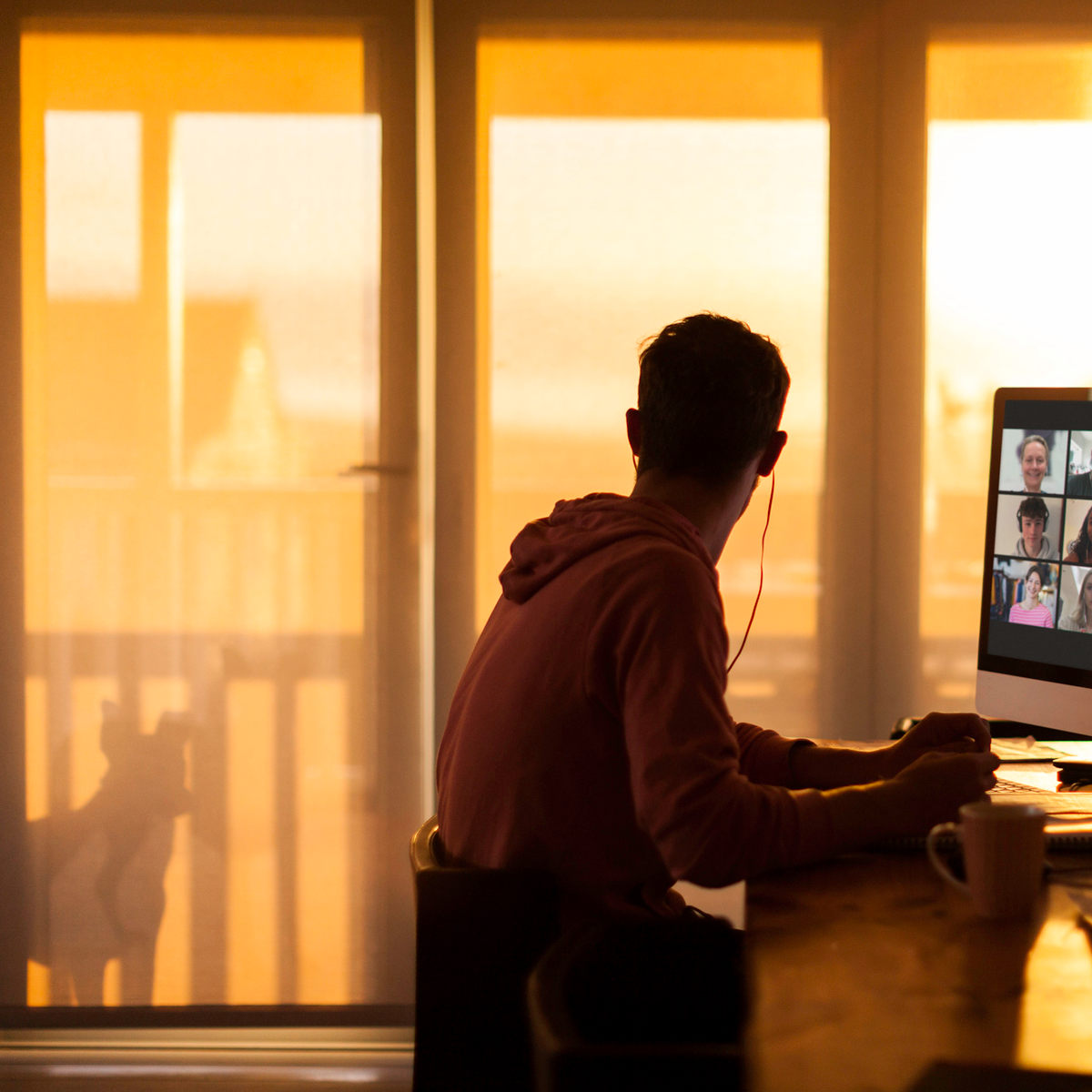Back to Courses









Personal Development Courses - Page 39
Showing results 381-390 of 514

Suffering and the Human Condition
Suffering is an inevitable yet poorly understood feature of human existence. This course examines how societies respond to the puzzling reality of human anguish. Among the questions it addresses are the following: What is suffering? Which types of human affliction are unique to the modern world? Have the meaning and portrayal of suffering changed over time? Do digital media sensitize or desensitize us to the anguish of distant others? In addition to introducing students to academic literature and debates on these topics, Suffering and the Human Condition will give them the opportunity to learn a method for studying human affliction that identifies the actors that perpetuate it.

Speaking to persuade: Motivating audiences with solid arguments and moving language
In the professional realm, we need to be able to argue without being argumentative. Whether you are fundraising for a nonprofit, pitching a business proposal, or suggesting a change to company policy, you are making arguments. In making the case for your topic, you often want to raise awareness, identify a pressing problem, discuss appropriate solutions, and outline specific steps for the audience.
To be persuasive, you must be clear (the audience may have little to no existing knowledge), you must be convincing (you are trying to sway the audience that your argument is valid), and you must be compelling (you are trying to motivate the audience enough so that they want to take specific actions). Persuasive speaking thus requires clarity, strategy, topic mastery, plus a sense of style and presence.
By the end of this course, you should be able to design persuasive speeches that address problems and solutions and that motivate audience members. You should be able to use rhetorical style strategically and deliver passionate and compelling speeches. Learners will record speeches, providing and receiving peer feedback.

Data Visualization in Microsoft PowerPoint
At the end of this project you will be able to create a simple PowerPoint presentation from scratch using different basic elements. First, you will learn how to create your PowerPoint presentation using text. Then, you will get to know options to improve your presentation by adding images and other visuals. Additionally, you will learn a few easy methods to make your slide transitions smoother and more appealing to your audience. Creating a Microsoft PowerPoint will allow you to be able to have the best visual support possible during your presentation. Visual support via Microsoft PowerPoint will ensure your audience stays engaged and attentive as well as interested.
The goal of this project is to teach you how to be successful with your presentations and how to make them more interesting so your audience can digest the information you are providing more easily and will also retain more of the information provided.

An Intuitive Introduction to Probability
This course will provide you with a basic, intuitive and practical introduction into Probability Theory. You will be able to learn how to apply Probability Theory in different scenarios and you will earn a "toolbox" of methods to deal with uncertainty in your daily life.
The course is split in 5 modules. In each module you will first have an easy introduction into the topic, which will serve as a basis to further develop your knowledge about the topic and acquire the "tools" to deal with uncertainty. Additionally, you will have the opportunity to complete 5 exercise sessions to reflect about the content learned in each module and start applying your earned knowledge right away.
The topics covered are: "Probability", "Conditional Probability", "Applications", "Random Variables", and "Normal Distribution".
You will see how the modules are taught in a lively way, focusing on having an entertaining and useful learning experience! We are looking forward to see you online!

Facilitate Online Discussions with Eduflow
In this project, you will create and learn how to facilitate an online discussion with Eduflow. Eduflow is a free, easy-to-use online course builder that allows you to develop an interactive learning experience. One of the many great features of Eduflow is their user friendly and interactive discussion format. Eduflow allows you to break the course participants up into smaller groups, giving you the ability to host more effective and interactive discussions. Instructors also have the ability to create prerequisites, completion rules, and deadlines to better manage the discussion process and keep course participants on task. With its social-media-like aesthetic, it is a great way for learners to interact with their instructor and peers and fully immerse themselves into the course content.
Note: This course works best for learners who are based in the North America region. We’re currently working on providing the same experience in other regions.
Introduction to Mathematical Thinking
Learn how to think the way mathematicians do – a powerful cognitive process developed over thousands of years.
Mathematical thinking is not the same as doing mathematics – at least not as mathematics is typically presented in our school system. School math typically focuses on learning procedures to solve highly stereotyped problems. Professional mathematicians think a certain way to solve real problems, problems that can arise from the everyday world, or from science, or from within mathematics itself. The key to success in school math is to learn to think inside-the-box. In contrast, a key feature of mathematical thinking is thinking outside-the-box – a valuable ability in today’s world. This course helps to develop that crucial way of thinking.

Adaptability and Resiliency
To survive in today’s constantly changing business landscape requires being comfortable in uncertainty. Adaptability is what allows people and businesses to solve problems, overcome challenges and move back from the edge of attrition to the more stable ground of relevance. Adaptability is everything. — Jeff Boss, Forbes
Adaptability refers to your ability change your actions, course, or approach in order to suit different conditions or environments. Adaptability implies a sense of personal choice, of purposefully navigating—rather than being driven by—changing circumstances.
Resilience is the capacity to recover quickly from difficulties. Resilience gives you the ability to bounce forward with new insights and learning you can carry into the future.
Both adaptability and resilience include the ability to assess an evolving situation from multiple perspectives, to shift thinking and viewpoint, and to choose the best response. Adaptable people flourish amidst chaos while inflexible people flounder. Adapters find openings in situations where others only see closure. This 4-module course will give you knowledge and tools to become more adaptable and resilient in your workplace and in your life.

Support for Visual Processing with Microsoft Word
By the end of this project, you will have created multiple tools to assist students in your classroom who need support for visual processing. Whether they would benefit from reading trackers or organizational supports for their work, you will become confident at how to support their needs in order to encourage their success in the classroom.

Educating Deaf Children: Becoming an Empowered Teacher
Many Deaf children around the world still leave school functionally illiterate. In some cases there is no allowance made for education of Deaf children at all. This 4 week course provides you with invaluable knowledge and skills about teaching Deaf children. You will learn about the importance of Deaf culture and community, the need for a language rich environment for the Deaf child from as young as possible, and that having access to sign language can help Deaf children academically, emotionally, and socially. We also cover various accommodations and modifications that you can apply in your classroom and learning environment to create an accessible learning experience for Deaf children. You will also find that a shift in attitude will enable you to connect with Deaf children with more understanding. This course does not teach sign language since each country has its own sign language. We hope that through this course you become an empowered teacher - for yourself, for your fellow teachers, and most importantly, for the Deaf children in your classroom.
You will be able to purchase a Verified Certificate if you wish to show evidence of your achievements, but this is optional, and you may apply for Financial Aid if you are unable to pay the certificate fee.

Virtual Teacher Final Project
The Final Project will be a hands-on, comprehensive project that practitioners of virtual education can implement in their profession. For this final project, learners will draft a design plan for an online learning module utilizing materials learned from the virtual teacher series. Learners will choose the subject matter, method of delivery, tools, instructional strategies, and assessments, with the goal of creating a module of online or blended instruction that meets the needs of their students. Learners do not have to create, develop or teach the online learning module they design.
Upon completing this course, you will be able to:
1. Design a fully online or blended instructional module
2. Apply theories and/or strategies of effective online instruction
Popular Internships and Jobs by Categories
Find Jobs & Internships
Browse
© 2024 BoostGrad | All rights reserved